■年間スケジュール(予定)
| 企画展 | 2025/4/5~7/27「瀬戸染付 人物黄昏之図」終了 |
|---|---|
| 2025/8/2~11/24「瀬戸染付 草花の饗宴」 | |
| 2025/12/6~2026/3/22「瀬戸染付 吉祥の調べ」 | |
| 常設展 | 修了生・研修生の作品展示(一部販売あり) |
■過去の企画展
 |
 |
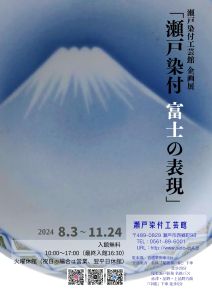 |
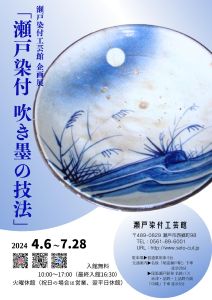 |
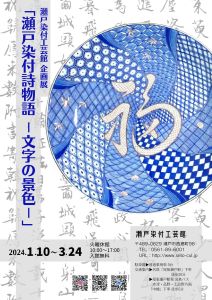 |
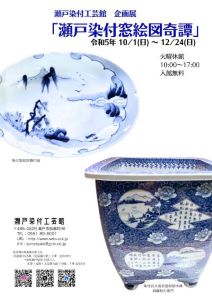 |
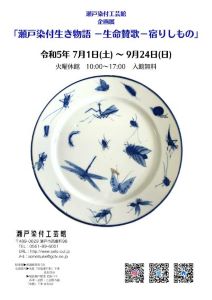 |
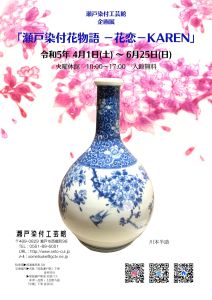 |
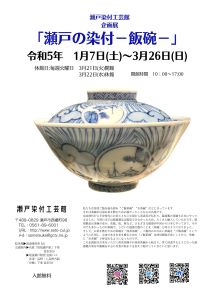 |
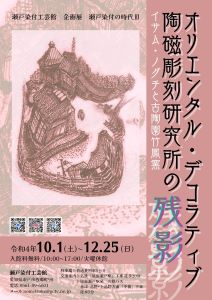 |
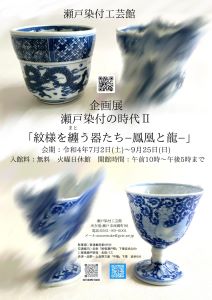 |
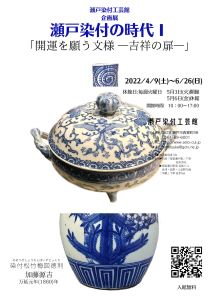 |
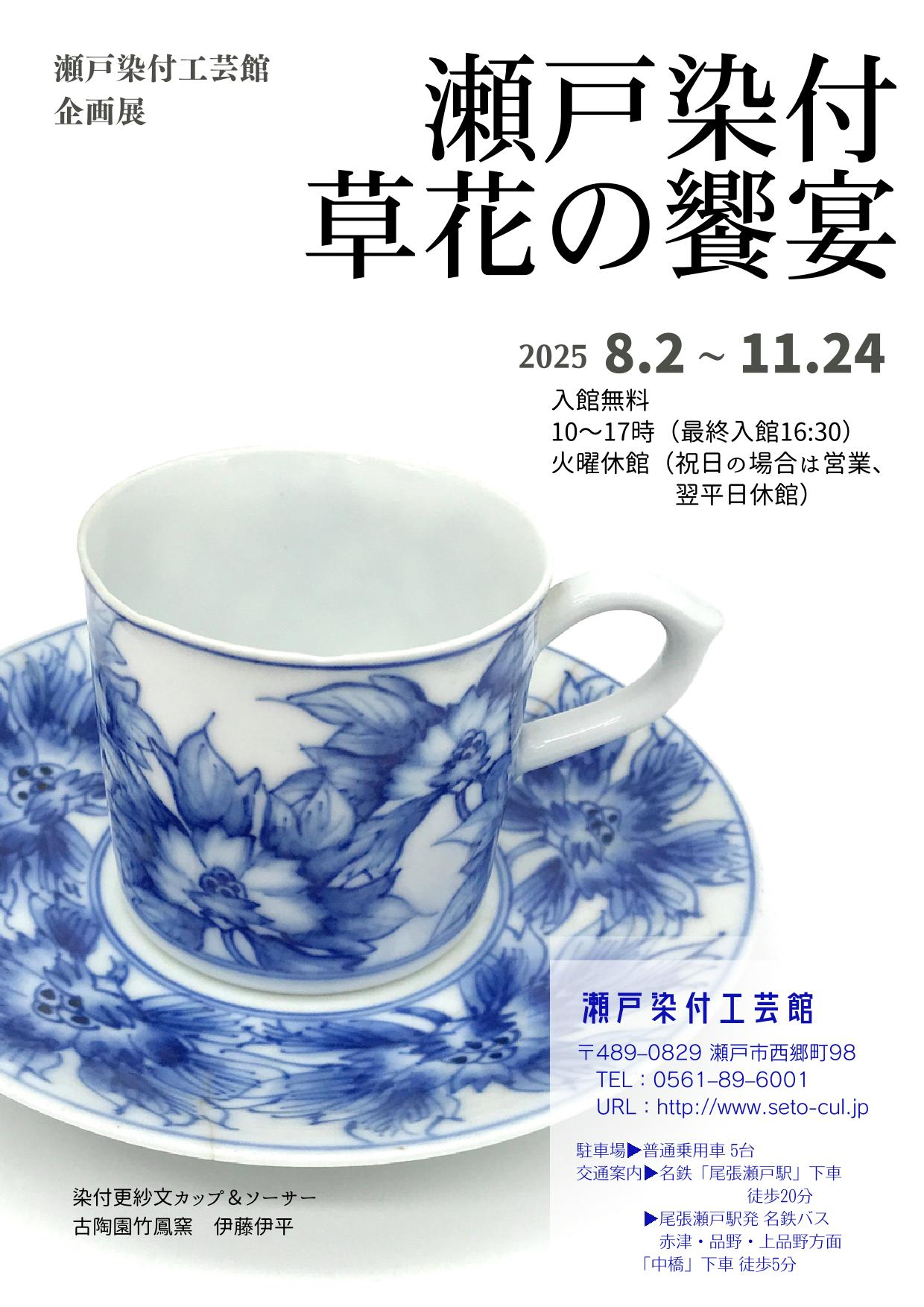
瀬戸染付における草花表現のルーツは中国明清代(景徳鎮)の影響で17世紀初頭にはじまりました。
当初は菊・蓮・牡丹・竹などがよく描かれ、瀬戸でも多く模倣・変容され、江戸時代には日本独特の四季や自然観が反映され、桜・梅・菊・朝顔・撫子・桔梗・芒(すすき)・紅葉等が好まれました。そして陶工たちは屏風画や着物の文様からもインスピレーションを得ており、それは絵画的な構成やリズム感につながったと思われます。
こうした流れを見ると瀬戸染付は中国と日本の自然観の融合であると言えるでしょう。古典的な作品からこれからの瀬戸染付を発展させるためのモチーフとは何か?創造のきっかけとなることを願い、ご紹介いたします。
The roots of floral expression in Seto blue and white porcelain date back
to the early 17th century, under the influence of the Ming and Qing dynasties
(Jingdezhen) of China.
Initially, chrysanthemums, lotuses, peonies, and bamboos were often depicted,
and many of these were imitated and transformed in Seto, but in the Edo
period, the unique Japanese view of the seasons and nature was reflected,
with cherry blossoms, plum blossoms, chrysanthemums, morning glories, pinks,
bellflowers, pampas grass, and autumn leaves being favored. Potters also
drew inspiration from folding screen paintings and kimono patterns, which
is thought to have led to pictorial compositions and a sense of rhythm.
Considering this trend, we can say that Seto blue and white porcelain is
a fusion of Chinese and Japanese views of nature. What are the motifs that
can be used to develop Seto blue and white porcelain from classical works?
We would like to introduce them to you in the hope that they will inspire
your creativity.
展示作品数:20点
Number of exhibited works: 20 pieces
| 企画展 | 2025/4/5~7/27「瀬戸染付 人物黄昏之図」終了 |
|---|---|
| 2025/8/2~11/24「瀬戸染付 草花の饗宴」 | |
| 2025/12/6~2026/3/22「瀬戸染付 吉祥の調べ」 | |
| 常設展 | 修了生・研修生の作品展示(一部販売あり) |
 |
 |
 |
 |
 |
 |
 |
 |
 |
 |
 |
 |
Seto City Cultulal Promotion Foundation, All Right Reserved. Design by http://f-tpl.com